Let me give you a general idea of what you can expect during a ceremony. Because there are different types of initiations, I will only give a general overview.
A Bwiti ceremony typically begins with a few days dedicated to relaxation, learning, and getting acquainted with one another. During these initial days, payment for the ceremony is also usually settled (in mama Aline's case completing the last 50% in cash), if not already done.
Obtaining cash from ATMs in Gabon can be challenging, as most do not accept Mastercard, except for one ATM at the Libreville airport. Also AMEX, or bank cards are not accepted. It is advisable to carry cash and exchange it at the airport. VISA cards tend to be more widely accepted. For money transfers into Gabon, Remitly is a convenient option, particularly for depositing cash into UBA bank in Libreville. Papa Jean Clause can pick this up when you let him know. Carrying a significant amount of cash is generally safe if you proceed directly to us from your hotel or airport. Medzime Assock is a trustworthy service, safe to carry cash with you.
The initial days of relaxation are crucial for entering the ceremony in a completely relaxed state, fostering trust in the team through familiarity. It is also important for the Nganga or Nima (a fully realized shaman or ceremony leader) to understand the participants' needs and ensure they are sober, drug-free, and well-rested. During this period, participants will consume specific, healthy foods in preparation, often including meat and fish unless a request is made to exclude meat. Starting in 2025, we plan to offer biologically-grown fruits and vegetables from our own garden, washed with potable water.
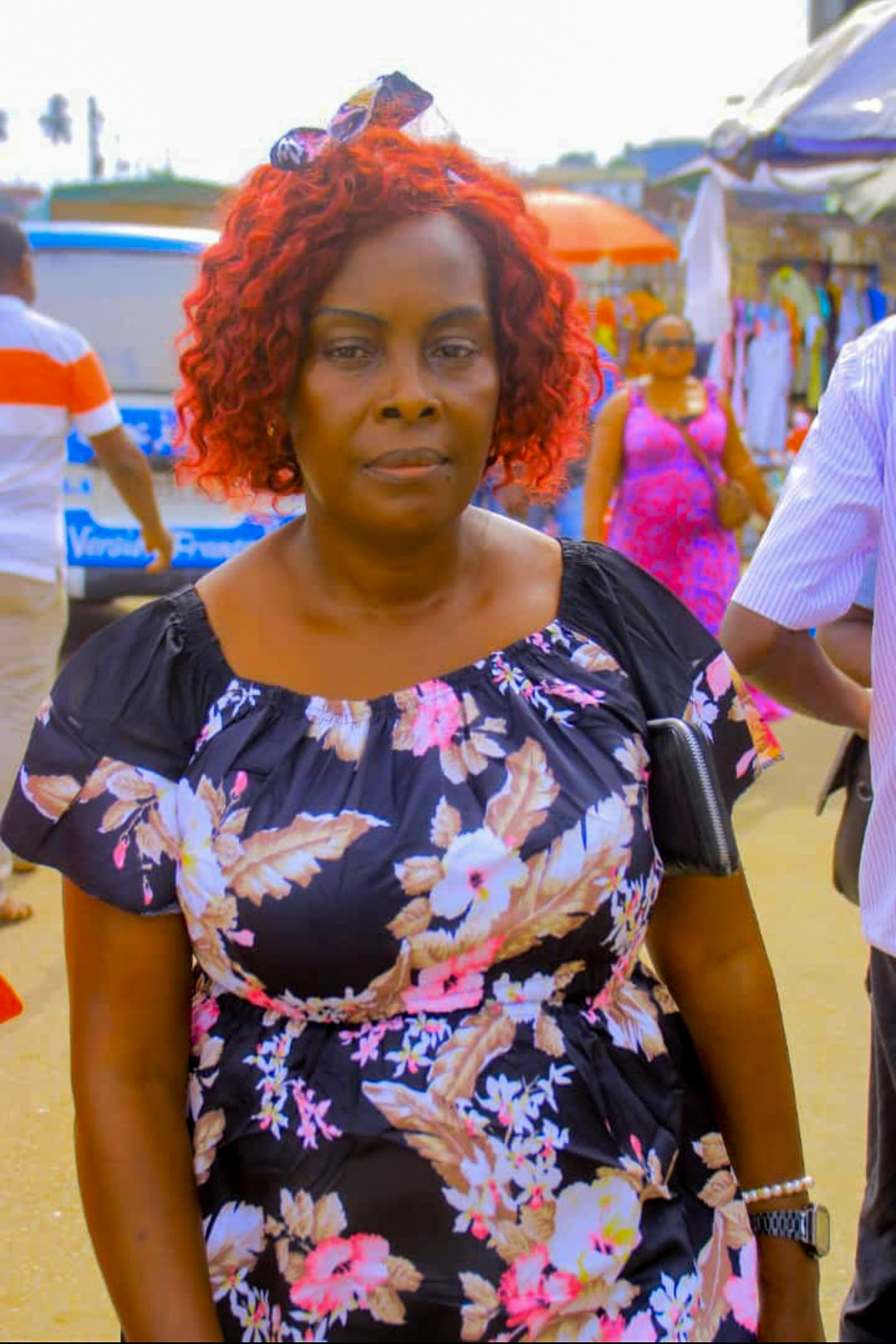
mama Aline shopping for the initiation
In some Bwiti tribes, it is recommended or even required to abstain from sex, drugs (especially hard drugs and psychiatric medications), and to limit alcohol and caffeine intake for at least 3 weeks before and after the initiation. Iboga is known to enhance libido, so following the initiation, it is advised to explore the tantra path to prolong and better utilize the energies rather than dissipating them quickly.
The ceremony usually begins around the second day with a one-on-one questionnaire and confession session (ayebe) with the nima. The questionnaire you can find under preparation. This is followed by the Efulu, a fire and smoke bath lasting approximately two hours, accompanied by music. Participants are covered with blankets over a fire/smoke pit, similar to a sweat lodge, which aids in cleaning the body and clearing the confessions and negative experiences.
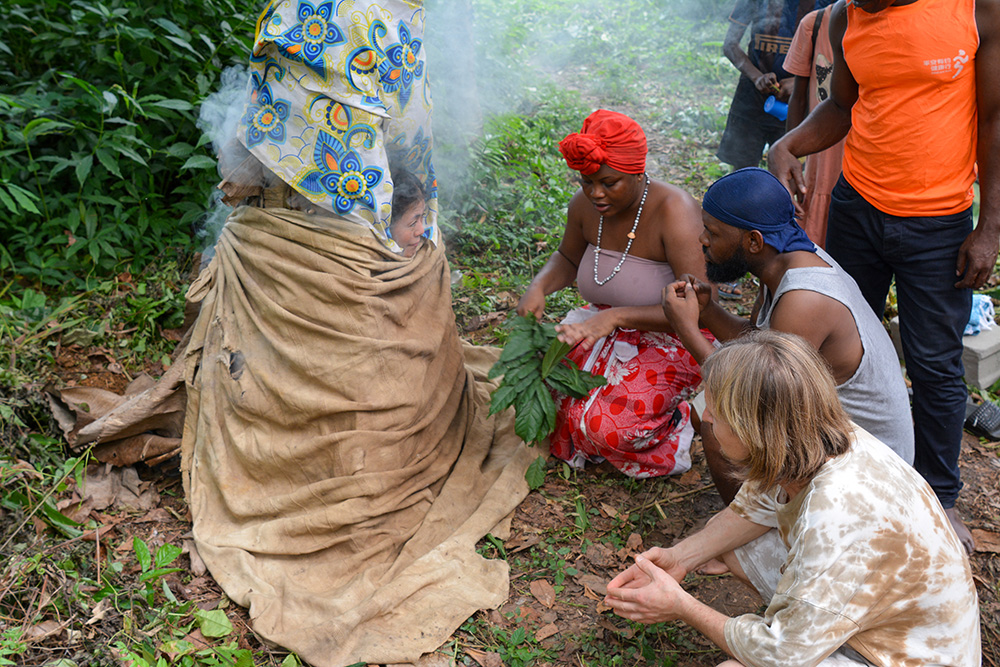
- Efulu
The next step is the mosusu, a water cleansing ceremony with local herbs, which may include iboga. This ceremony takes place in a remote jungle area near a river and is accompanied by music and fire, with the village participating in the cleanse.
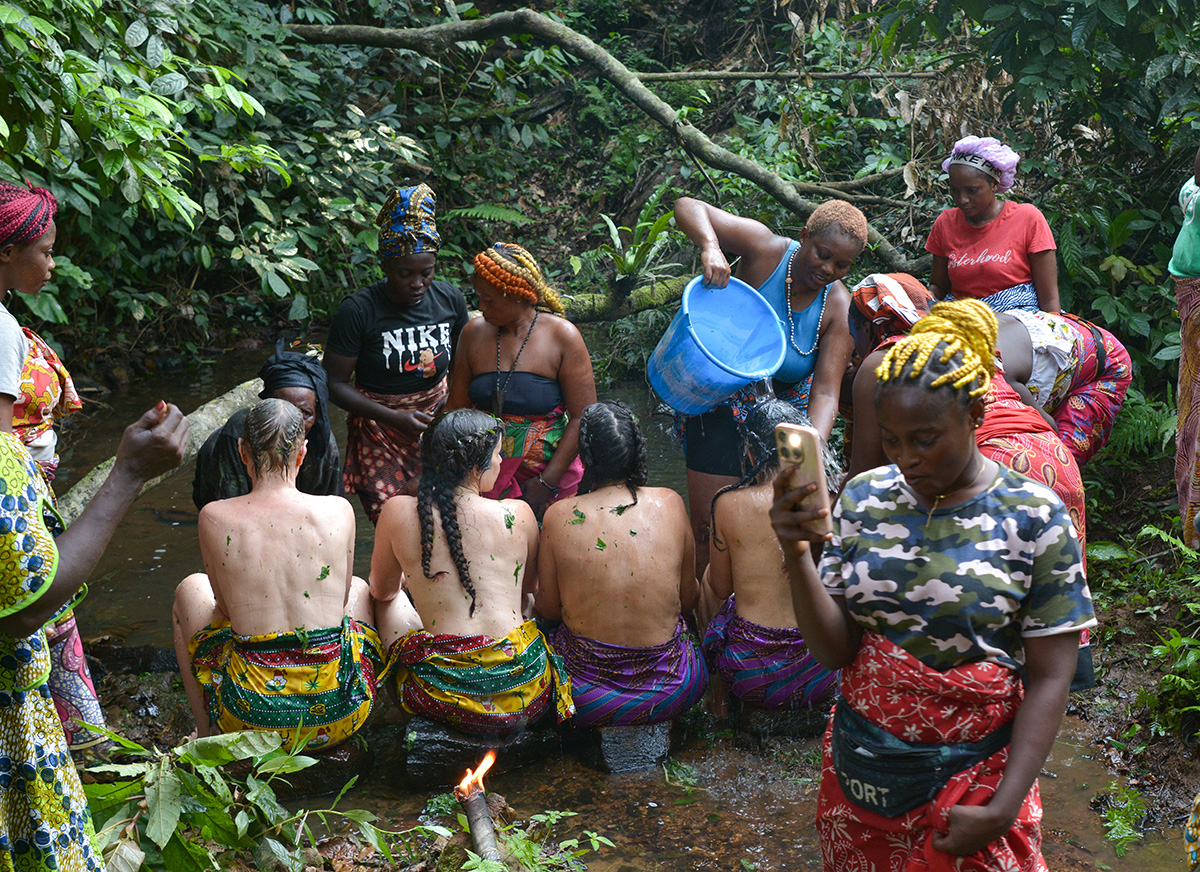
- Mosusu
The bathing ritual involves a cleanse with Ocume leaves and a fire cleanse using a Mupetou (fire stick, our logo), after which participants return to the village. Post-river cleansing, participants don ritualistic clothing, their bodies are painted white, and they receive their first spoon of iboga, if included in the mosusu.
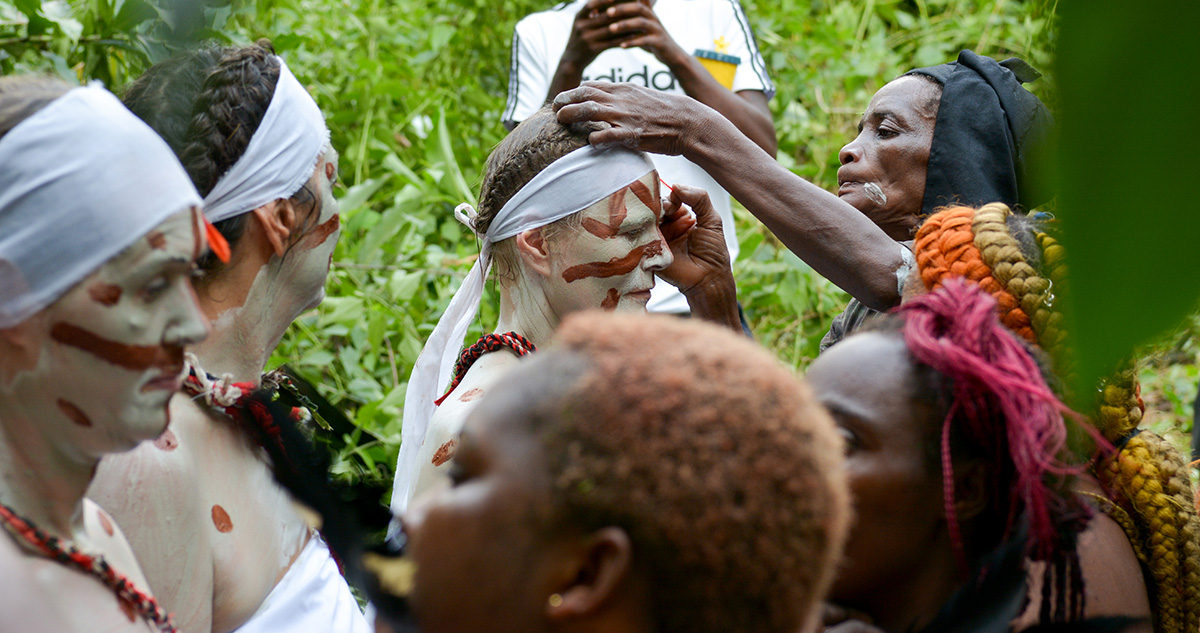
- Ritual painting
A red feather, known as Ase Kos, from a grey parrot is placed on the forehead to facilitate communication with the spiritual realm during the main ceremony.
Iboga is traditionally not administered in capsules, as it is more effective when mixed with saliva. Fresh iboga is preferred as it numbs the mouth and small intestines, reducing taste aversion and the likelihood of vomiting. It also acts faster and more intensely, ensuring participants are not overly exhausted the next day.
The following day, participants may drink emetic tea (such as mequisa) to induce vomiting. This tea, made from forest bark and leaves known to the Nima, is used to assess participants' ability to purge and to provide relief from nausea. If a participant is unable to purge, they may experience a mild headache, but the process is not always conducted in this order and can be adjusted as needed.
The question of whether purging is beneficial in a Bwiti ceremony arises frequently. The essence of the matter is that the longer one engages with the root bark, the more profound the cleansing can be. In many Bwiti ceremonies, purging is expected, and the Nima examines it to ensure the process is proceeding correctly. However, at places like Mama Aline's, where fresh iboga is provided, purging is less common because fresh iboga interacts with the body differently and more effectively.
One should neither force a purge nor purge out of fear in an attempt to halt the process. It is best to allow the body to determine the need for purging. Some participants never purge throughout the ceremony and some do but still report profoundly positive initiation experiences.
The nima prepares the iboga root bark for consumption during the ceremony. The freshly harvested iboga roots are cleaned, cut, skinned, and the white pulp is scraped off for use. Fresh iboga is preferred for its immediate and potent effects, in contrast to the slower and less effective dry powder.
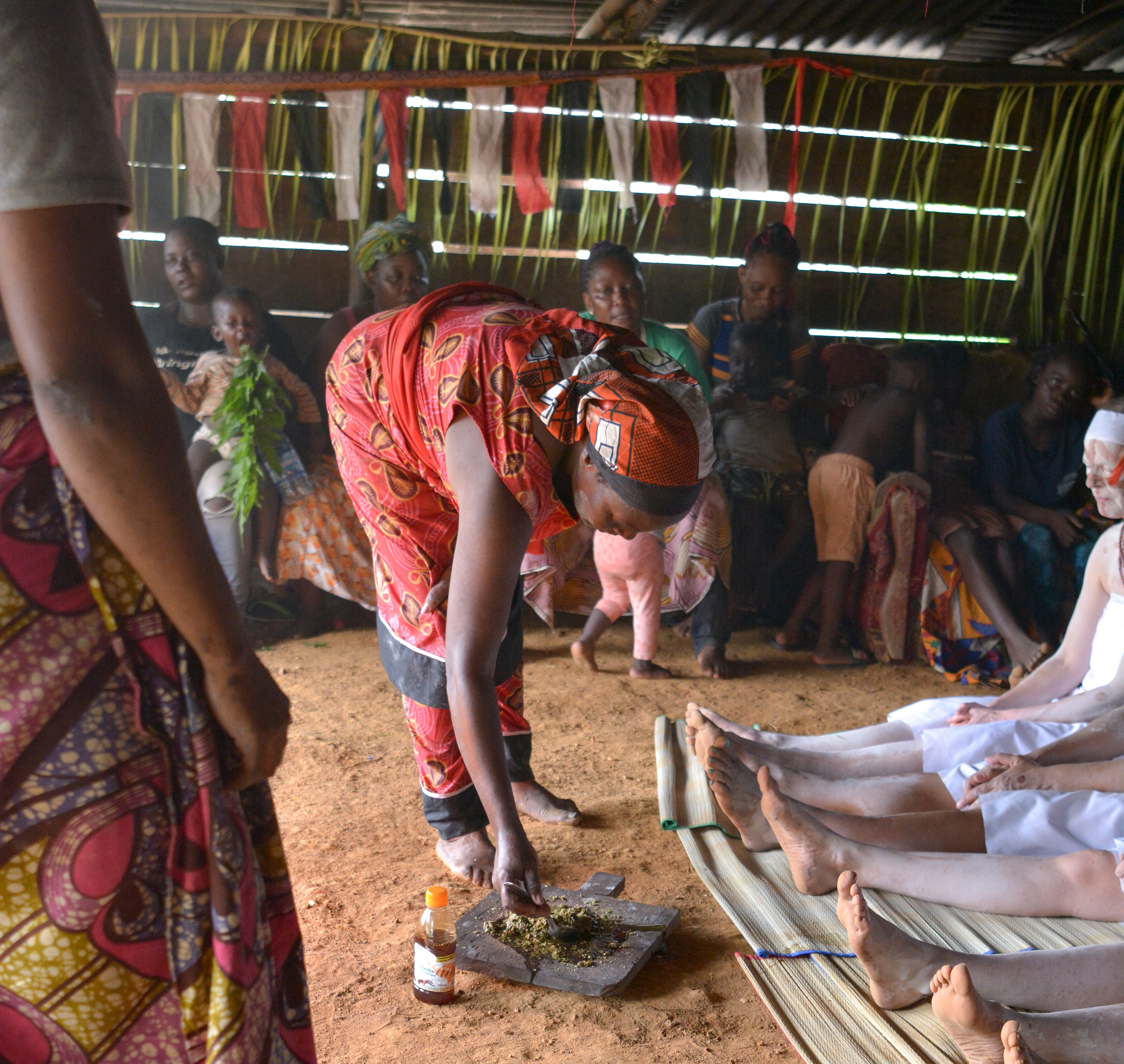
- Serving fresh iboga
Gabon is renowned for the most potent iboga, with Cameroon and other regions producing less potent variants. The age of the iboga plant plays a crucial role, with bushes aged seven years being the minimum for ceremonial use, though older plants, ideally 15 years or more, are preferred for better ceremonies. However, overly aged plants can become too bitter and induce vomiting too quickly when dried. Exceptionally old fresh iboga, as is used in our place, is considered the best. The geographic origin of the iboga, such as Seta Cama from the south coast of Gabon, can also influence its strength. These are the most potent because they grow slower.
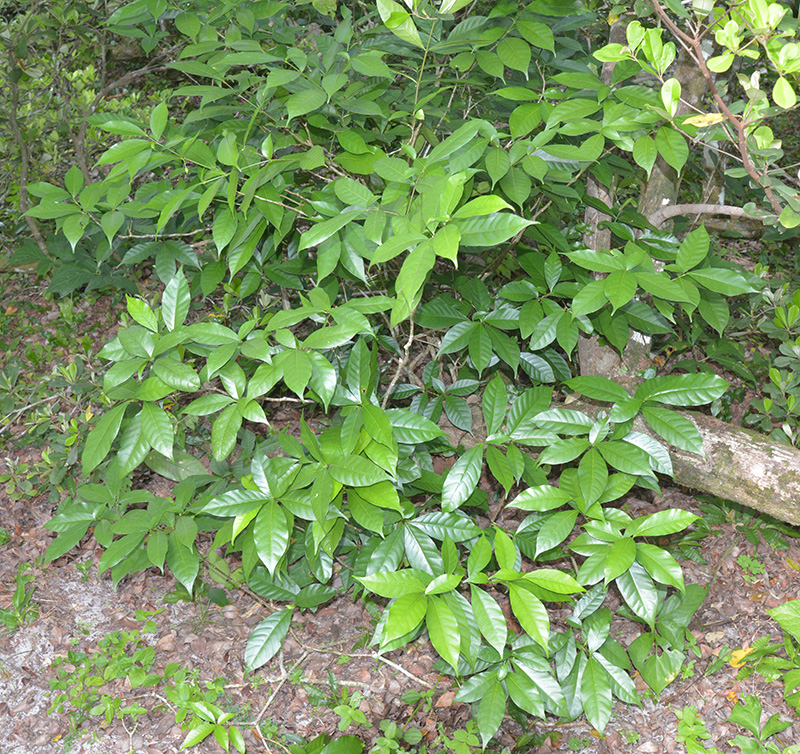
- Seta Cama - super potent iboga
The main ceremony's commencement varies across traditions, usually involving the consumption of about eight spoons of iboga, with some traditions offering more for deeper processes like Dissumba.
Participants often face a mirror after consuming iboga, a technique used for self-inquiry, reminiscent of the practice by Ramalinga Vallalar, a South Indian saint. This mirror session initiates ego dissolution. Additionally, participants may find themselves surrounded by iboga root bark, further immersing them in the experience.
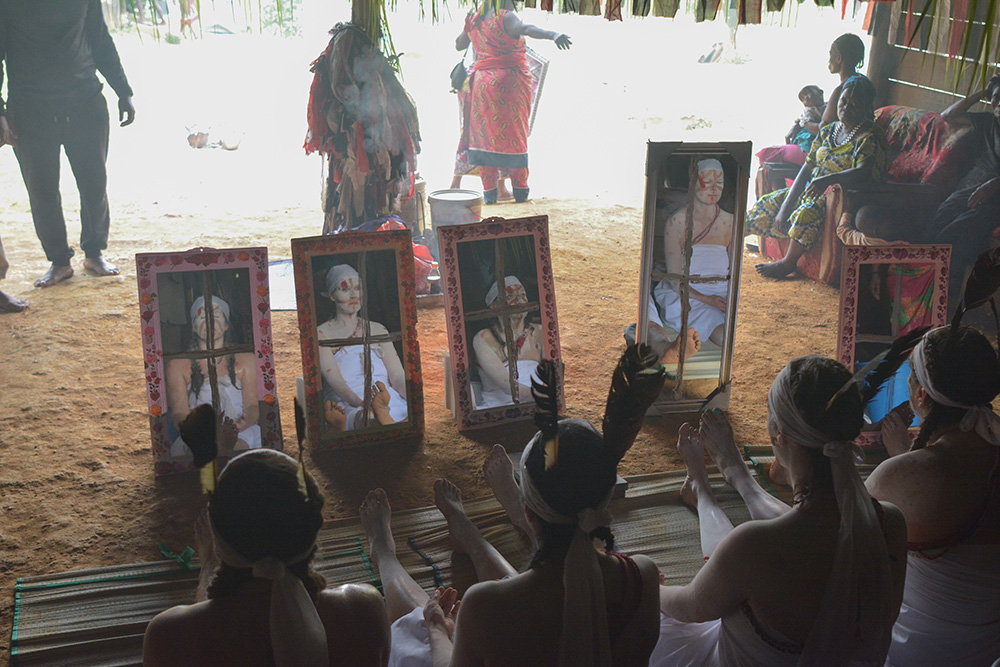
- Mirror process
We are in the process of designing a path to the river where you are surrounded by iboga bushes, including the path itself.
In the Dissumba ceremony, a larger quantity of iboga is administered to induce loss of consciousness, a practice only done to participants who have done a previous initiation. The intense energy following the mirror session leads to lying down on a mat, and in some traditions, participants are given the Bissembe (a musical instrument and/or objects). In Bwiti tradition, when an item is offered, it must be actively accepted through a take-and-release process, symbolizing genuine acceptance.
The ceremony includes approximately six hours of Bwiti music and dance, facilitating and guiding the process, with village members and the Nima playing significant roles. This spiritual cleanse and awakening surpasses decades of deep meditation and self-inquiry, culminating in a full kundalini awakening. Participants might experience an increased heart rate and altered vision shortly after consumption, along with temperature changes and kundalini energy waves coursing through the body.
Ngombi music
Meditating with Bwiti music is also a great way to prepare for the ceremony.
Mama Aline tends to the participants, known as Banzi's, as the harmonious melodies of the Ngombi harp resonate through the room, steering the course of the ceremony.
As the ceremony deepens, the boundaries between the mind's projections and reality blur, with dreams intertwining with the tangible world. A distinctive humming, often likened to the sound of the Bwiti hummingbird, is commonly experienced.
Participants may also encounter a ringing in their ears and a perceptible deceleration of time. It's important to note that the specifics of what transpires during a ceremony, especially the profound visions referred to as Yen, are closely guarded secrets within the Bwiti community, and thus, will not be disclosed here. However, it's possible to discuss some general aspects.
Due to the slowing of time, individuals have the opportunity to confront and dissolve traumas by focusing their attention, as the usual interference from the mind is absent, akin to defragmenting a hard drive. This process can be intense, with the mind in a state of free-fall. Dreams and reality merge fully, and confronting fears from the past can be overwhelming if resisted. Iboga persistently works to dissolve these fears until they are completely eradicated, a process that can be lengthy. The primary function of iboga, or kundalini, is to unblock the spinal cord, referred to as sushumna in India, which is often obstructed by fear, trauma, and stress. In Dissumba ceremonies, this process is expedited, leading participants into a void where all sensation ceases, akin to a symbolic death.
The most intense phase of the ceremony lasts about six hours, coinciding with the time it takes for the root bark to pass through the small intestines. The experience gradually subsides but continues for another 24 to 26 hours. Fasting before the main event can intensify the experience, though minimal eating is advised, especially magnesium rich foods. Staying hydrated is crucial, but overconsumption of water during the ceremony should be avoided to prevent nausea, as should excessive movement.
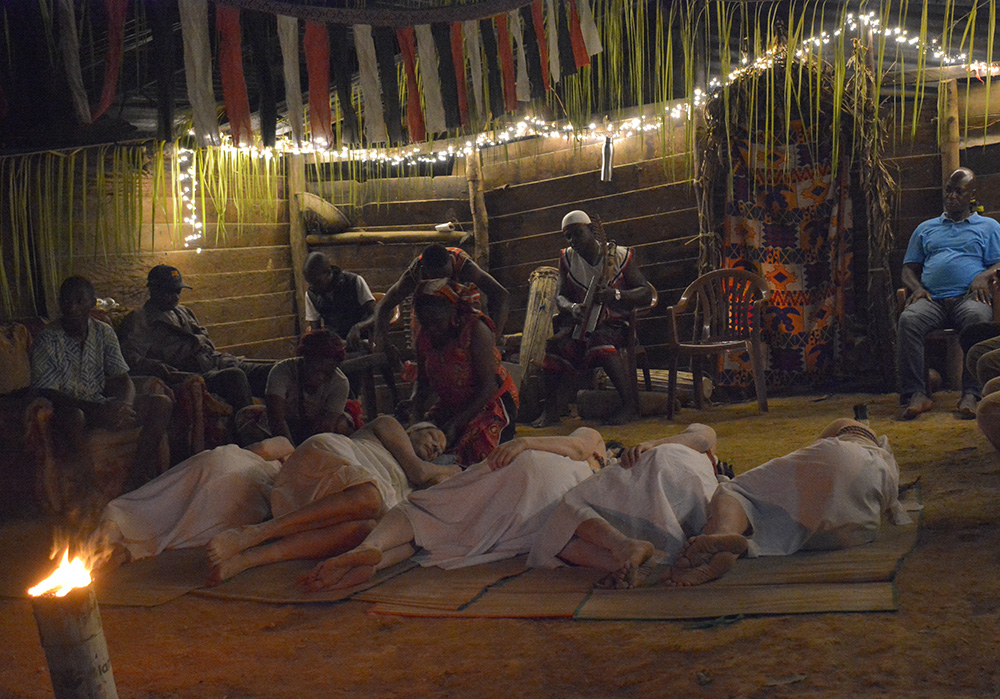
- Deep into the process
The duration of the process, especially after 24 hours without sleep and intense introspection, can be challenging, but it's important to embrace the experience. For those who feel detached from reality or their physical body, the continuous playing of the ngombi harp provides a sonic guide back to the tangible world.
The subsequent three days are for rest and continued processing within the safety of the village, as perceptions of normalcy may be misleading. At the culmination of this period, the community comes together with Bwiti music and singing with the sound of healing sessions with the Bwiti harp and mungongo instrument.
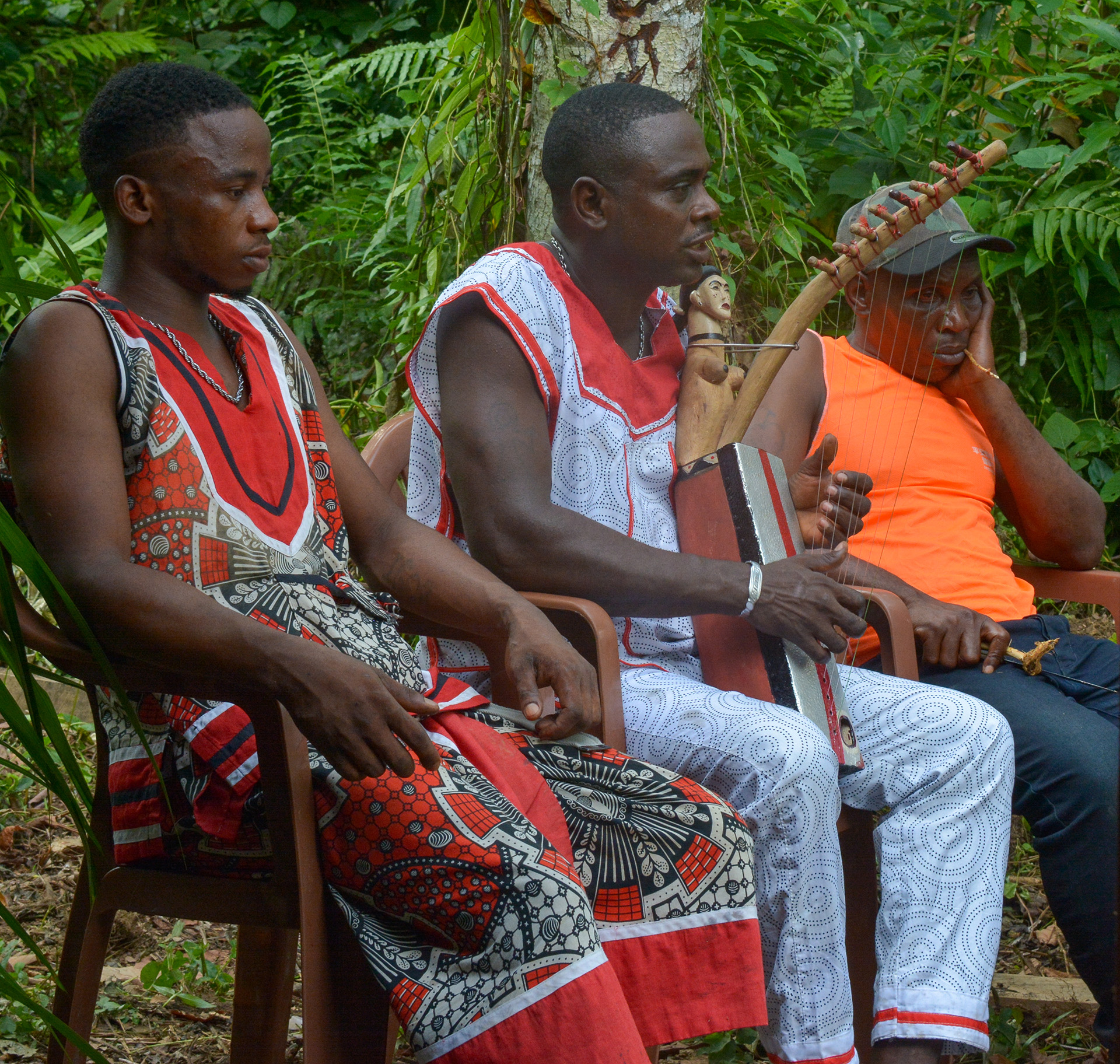
- Ngombi Player (Boussingue)
Participants then share their insights and experiences with the village and the Nima, who bestows upon them a Bwiti name (Kombo) reflective of their ceremonial journey.
The celebration transitions into the Mayaya, a festivity marking rebirth, distinct from the Dissumba interpretation. Mayaya is a celebration of the new life and inclusion in the Bwiti family, characterized by all-night dancing with fire and music and beer (yes you read this correctly, with beer but only meant for the locals who joined the celebration. This is a local custom that looks sometimes strange from a spiritual point of view, but is very normal in Gabon), and the lighting of a large Etsemanga, akin to a giant candle is again part of the Mayaya. Participants, adorned in servaline genet or civet cat fur over their red initiation attire, symbolizing their energized state, engage in ritualistic dance around the fire.
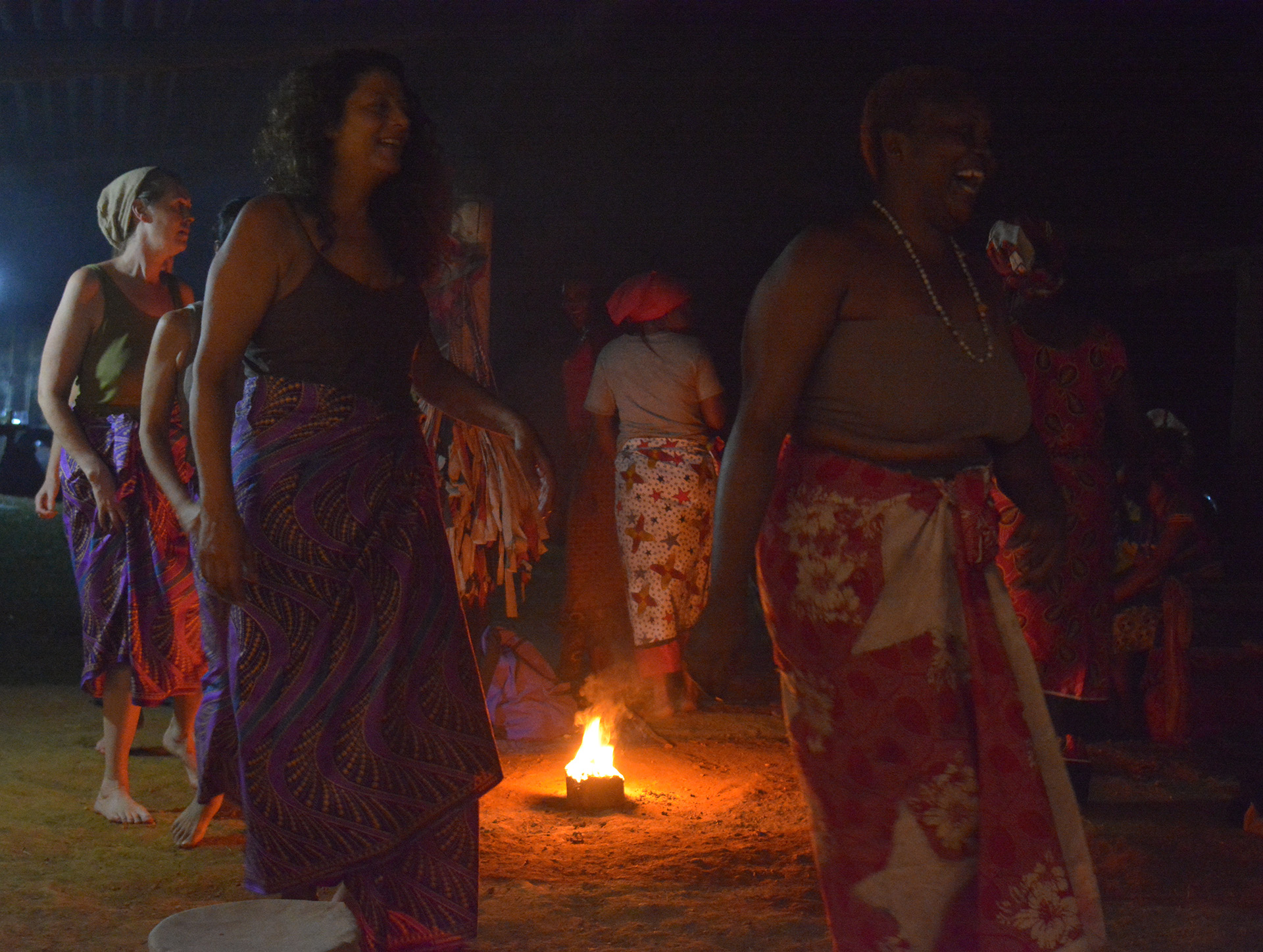
The communal and social facets of Bwiti play a significant role, with communities often acting as extended families. Rituals and ceremonies are communal events that reinforce social bonds and a sense of belonging.
The musical instruments integral to the initiation and rebirth celebrations include the Ngombi (harp), Mungongo (string instrument), Missandza (nut-based instrument), Tsoque (rattle), Ambundo (wind instrument), Tambours Aussoumba drums (also known as Bwiti Tam-Tam, Nkonjo, or Mbejn) covered in gazelle skin, Etsika (horn), and the Obaka or Nkul (wooden sticks).
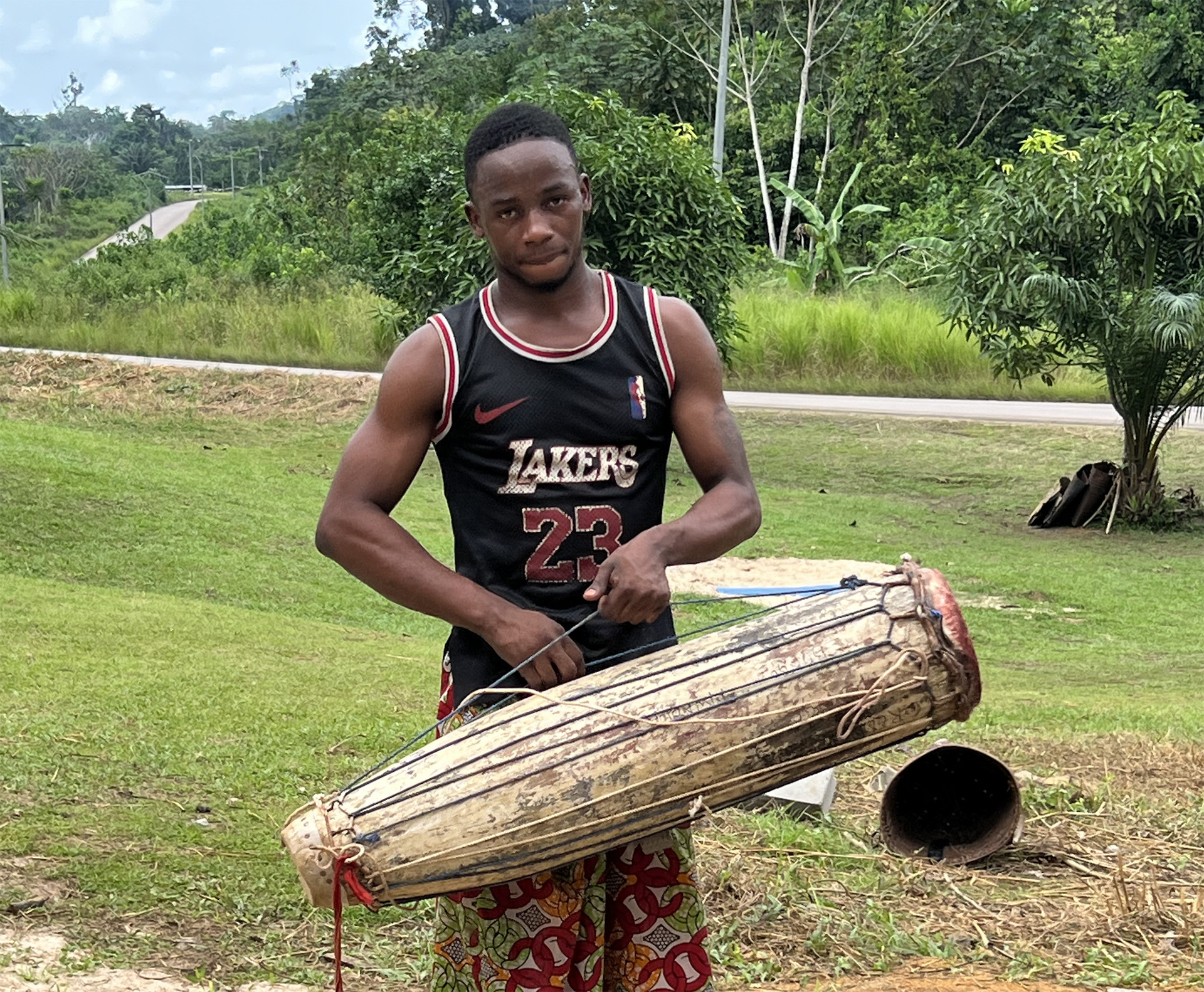
- Tam Tam



